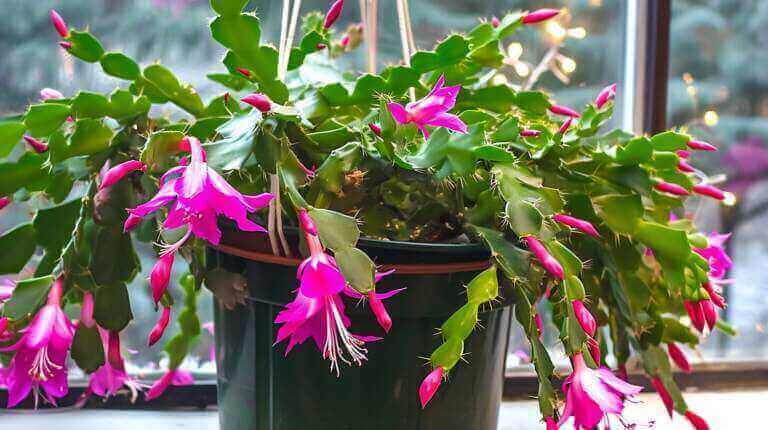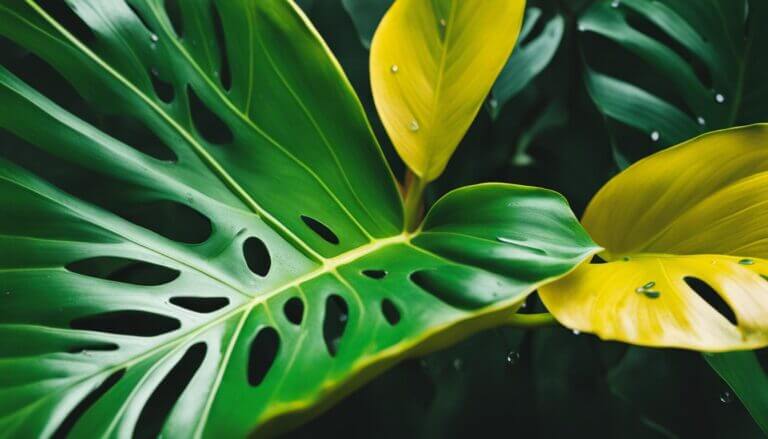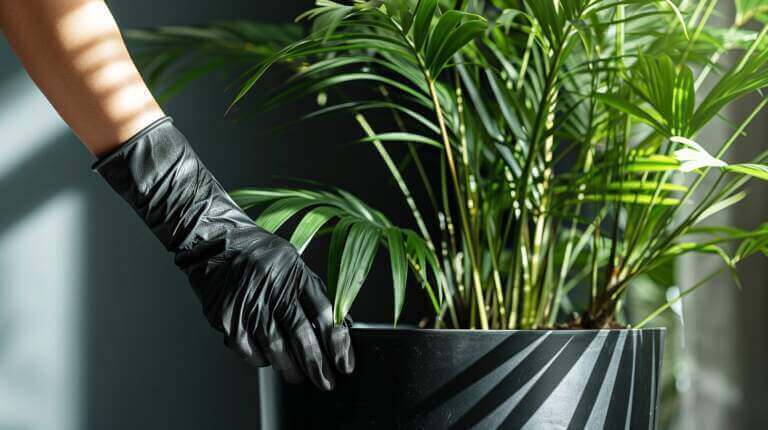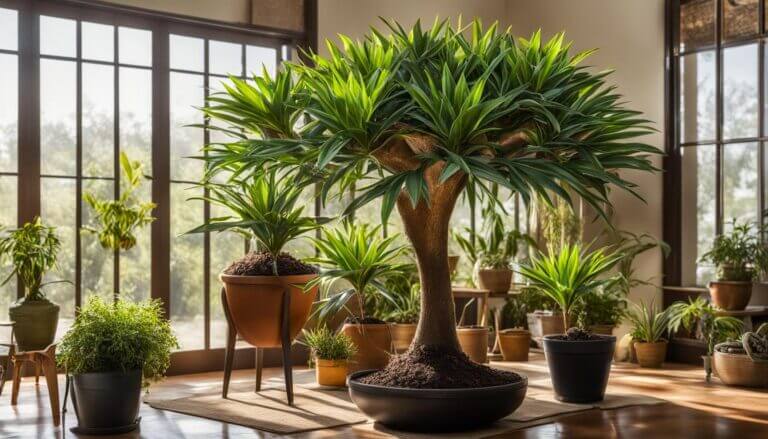The Best Soil Mix for Growing Healthy Dracaena Plants
When it comes to growing healthy dracaena houseplants, using the best soil mix is essential for their overall well-being and growth. Dracaenas, also known as dragon trees, are popular houseplants that require a good potting soil mix to thrive. These plants prefer rich, well-drained soil with a slightly acidic pH of 6.1-6.5 or neutral pH of 6.6-7.3. They require the macronutrients nitrogen, phosphorus, and potassium, as well as micronutrients such as calcium, chlorine, copper, iron, magnesium, and nickel. For best results, choose a potting soil mix that provides excellent drainage and contains organic material.
Some recommended ingredients for homemade potting mixes include activated charcoal, coarse sand, coconut coir, orchid bark or pine bark fines, peat moss, perlite, pumice, sphagnum moss, vermiculite, and worm castings. Dracaenas can be repotted every 3-4 years and should be placed in a pot that allows for proper drainage. They prefer bright, indirect light and should be watered regularly during the growing season, but allowed to dry out in the winter. Proper temperature and humidity levels should also be maintained. Pruning can be done to control shape and height, and propagation can be achieved through stem cuttings or by planting the top of the plant.
Key Takeaways:
- Dracaenas prefer rich, well-drained soil with a slightly acidic or neutral pH.
- A good potting soil mix should provide excellent drainage and contain organic material.
- Recommended ingredients for homemade potting mixes include activated charcoal, coarse sand, coconut coir, and more.
- Dracaenas can be repotted every 3-4 years in a pot with proper drainage.
- They thrive in bright, indirect light and require regular watering during the growing season.
Understanding the Soil Requirements of Dracaena Plants
Dracaena plants have specific soil requirements that must be met in order for them to thrive and grow. These popular houseplants prefer a well-drained potting soil mix with a slightly acidic pH of 6.1-6.5 or a neutral pH of 6.6-7.3. To ensure optimal growth, it is important to provide dracaenas with a soil mix that is rich in organic material and allows for excellent drainage.
When creating a potting soil mix for dracaenas, consider incorporating ingredients such as activated charcoal, coarse sand, coconut coir, orchid bark or pine bark fines, peat moss, perlite, pumice, sphagnum moss, vermiculite, and worm castings. These ingredients help improve the soil structure, enhance drainage, and provide important nutrients for the plants’ growth.
It is also worth noting that dracaenas require certain macronutrients, including nitrogen, phosphorus, and potassium, as well as micronutrients like calcium, chlorine, copper, iron, magnesium, and nickel. When choosing or creating a soil mix, ensure it is capable of providing these essential nutrients to support the overall health and development of the plants.
| Recommended Ingredients for Dracaena Soil Mix |
|---|
| Activated charcoal |
| Coarse sand |
| Coconut coir |
| Orchid bark or pine bark fines |
| Peat moss |
| Perlite |
| Pumice |
| Sphagnum moss |
| Vermiculite |
| Worm castings |
Remember to repot your dracaena plants every 3-4 years and use pots that have proper drainage holes to prevent waterlogged soil. These plants thrive in bright, indirect light, so be sure to place them in a suitable location within your home. Maintain regular watering during the growing season, allowing the soil to dry out slightly between waterings. In the winter, reduce watering and let the soil dry out more thoroughly to prevent overwatering. To promote optimal dracaena growth, maintain the appropriate temperature and humidity levels, and consider pruning to control shape and height. Additionally, propagation can be achieved by taking stem cuttings or planting the top of the plant, allowing you to expand your dracaena collection.
Choosing the Right Soil Mix for Dracaena Houseplants
Choosing the right soil mix is crucial for the health and vitality of your dracaena houseplants. These beautiful plants, also known as dragon trees, have specific soil requirements to ensure optimal growth. Dracaenas prefer rich, well-drained soil with a slightly acidic pH of 6.1-6.5 or a neutral pH of 6.6-7.3. To provide the best environment for your dracaenas, it is essential to select a potting soil mix that meets their needs.
When choosing a soil mix, look for one that provides excellent drainage and contains organic material. This will help prevent waterlogged roots and allow proper air circulation. Some recommended ingredients for homemade potting mixes include activated charcoal, coarse sand, coconut coir, orchid bark or pine bark fines, peat moss, perlite, pumice, sphagnum moss, vermiculite, and worm castings. These components can enhance the drainage and nutrient-holding capacity of the soil, promoting healthy growth.
Dracaenas can be repotted every 3-4 years, so it’s essential to select a pot that allows for proper drainage. A pot with drainage holes is ideal to prevent water from pooling at the bottom and causing root rot. Additionally, dracaenas prefer bright, indirect light, so placing them near a window with filtered sunlight is ideal. Water your dracaenas regularly during the growing season, allowing the top inch of soil to dry out between waterings. In the winter months, reduce watering and let the soil dry out slightly between each watering.
It’s important to maintain proper temperature and humidity levels for your dracaenas. These tropical plants thrive in temperature ranges of 60-75°F (15-24°C) during the day and 55-65°F (13-18°C) at night. They also prefer humidity levels between 40-50%. To increase humidity, you can mist the leaves or place a tray filled with pebbles and water near the plant, ensuring the water level does not touch the bottom of the pot.
Summary:
- Choose a potting soil mix with excellent drainage and organic material for your dracaena houseplants.
- Incorporate ingredients like activated charcoal, coconut coir, perlite, and worm castings to enhance drainage and nutrient-holding capacity.
- Select a pot with drainage holes that allows for proper air circulation and prevents waterlogged roots.
- Place your dracaenas in an area with bright, indirect light, and water them regularly during the growing season, allowing the top inch of soil to dry out between waterings.
- Maintain temperature ranges of 60-75°F (15-24°C) during the day and 55-65°F (13-18°C) at night, along with humidity levels between 40-50%.
Table: Recommended Ingredients for Homemade Potting Mixes
| Ingredient | Function |
|---|---|
| Activated Charcoal | Improves drainage and absorbs impurities |
| Coarse Sand | Aids in drainage and adds weight |
| Coconut Coir | Retains moisture and enhances aeration |
| Orchid Bark or Pine Bark Fines | Improves drainage and adds organic matter |
| Peat Moss | Retains moisture and enhances nutrient retention |
| Perlite | Improves drainage and adds aeration |
| Pumice | Enhances drainage and adds aeration |
| Sphagnum Moss | Retains moisture and adds organic matter |
| Vermiculite | Retains moisture and enhances nutrient retention |
| Worm Castings | Improves soil structure and adds nutrients |
Remember, choosing the right soil mix is essential for the health and vitality of your dracaena houseplants. By providing the proper environment with a well-drained, nutrient-rich soil mix, your dracaenas will flourish and bring beauty to your home.
Tips for Creating the Ideal Soil Mix for Dracaena Houseplants
Creating the ideal soil mix for your dracaena houseplants is essential for their long-term health and thriving. These tropical plants require a well-draining soil that provides the right balance of nutrients and moisture. By following these tips, you can ensure that your dracaenas have the best soil mix to support their growth.
1. Choose a high-quality potting soil mix: Look for a potting soil mix that is specifically formulated for indoor plants and contains organic material. This will provide the necessary nutrients and promote healthy root development. Avoid heavy garden soil, as it can lead to poor drainage and root rot.
2. Provide excellent drainage: Dracaenas prefer slightly acidic soil with good drainage. To achieve this, add coarse sand, perlite, or pumice to the soil mix. These materials help prevent waterlogged soil and allow excess water to drain away, preventing root rot.
3. Incorporate organic matter: Adding organic matter such as peat moss or coconut coir to the soil mix improves moisture retention and nutrient availability. It also enhances soil structure, allowing roots to access oxygen more easily.
Recommended Soil Mix for Dracaena Marginata
| Ingredient | Percentage |
|---|---|
| Potting soil | 50% |
| Perlite | 25% |
| Coarse sand | 15% |
| Peat moss | 10% |
4. Consider the specific needs of dracaena marginata: If you have a dracaena marginata, it may require a slightly different soil mix. This particular variety prefers well-drained soil with higher sand content. A recommended soil mix for dracaena marginata is 50% potting soil, 25% perlite, 15% coarse sand, and 10% peat moss.
Remember to repot your dracaenas every 3-4 years, choose pots with proper drainage, and provide them with the right amount of light, water, temperature, and humidity. With the right soil mix and care, your dracaena houseplants will thrive and add beauty to your indoor space.
Proper Care and Maintenance for Dracaena Houseplants
Providing proper care and maintenance is vital for the overall well-being of your dracaena houseplants. These beautiful tropical plants require specific conditions to thrive and should be given the care they deserve.
First and foremost, it is important to ensure that your dracaena plants are potted in a well-draining soil mix. This will prevent waterlogging and root rot, as dracaenas prefer soil that is moist but not soggy. A mix containing organic materials such as peat moss, coconut coir, and worm castings will provide the necessary nutrients and retain moisture.
During the growing season, which typically occurs in spring and summer, dracaenas require regular watering. However, it’s important to allow the soil to dry out slightly between waterings to avoid overwatering. You can check the moisture level by inserting your finger about an inch into the soil – if it feels dry, it’s time to water. In the winter months, reduce watering as the plants enter a dormant period.
| Key Care Tips for Dracaena Houseplants |
|---|
| Provide bright, indirect light |
| Maintain temperature between 65-80°F (18-27°C) |
| Keep humidity levels around 40-50% |
| Prune to control shape and height |
| Propagate through stem cuttings or planting the top of the plant |
In addition to proper watering, dracaenas thrive in bright, indirect light. Place them near a window with filtered sunlight, ensuring they are not exposed to direct sunlight, which can scorch their leaves. Maintaining a consistent temperature between 65-80°F (18-27°C) is ideal for these plants, along with a humidity level of around 40-50%.
Regular pruning is necessary to control the shape and height of your dracaena plants. You can trim back any overgrown or damaged foliage to promote new growth. Propagation can be done through stem cuttings or by planting the top of the plant, which can be a fun way to expand your collection or share plants with friends and family.
By following these care and maintenance guidelines, you can ensure that your dracaena houseplants remain healthy and vibrant, bringing a touch of tropical beauty to your indoor space.
The Role of Soil pH in Dracaena Plant Health
Maintaining the right soil pH is crucial for the optimal growth and health of your dracaena plants. These tropical houseplants prefer slightly acidic soil with a pH range of 6.1-6.5 or neutral soil with a pH range of 6.6-7.3. Ensuring the correct pH level allows the dracaenas to absorb essential nutrients more effectively and prevents nutrient deficiencies or toxicities.
To achieve the ideal soil pH for your dracaenas, it is important to choose a potting medium that contains the right ingredients. One option is to use a mix that contains cactus soil, as it typically has a slightly acidic pH. Cactus soil is designed to provide excellent drainage, which is essential for preventing waterlogged conditions that can lead to root rot in dracaenas.
When creating a custom soil mix, incorporating organic materials such as peat moss can help lower the pH levels and create a slightly acidic environment. Additionally, adding materials like perlite or pumice can enhance drainage and aeration, further promoting a healthy root system and overall plant growth.
Table – Recommended Potting Mix Ingredients for Dracaena Plants
| Ingredient | Benefits |
|---|---|
| Activated Charcoal | Improves soil drainage and absorbs impurities |
| Coarse Sand | Enhances soil structure and drainage |
| Coconut Coir | Retains moisture while improving drainage |
| Orchid Bark or Pine Bark Fines | Provides aeration and enhances drainage |
| Peat Moss | Retains moisture and lowers soil pH |
| Perlite | Improves soil drainage and aeration |
| Pumice | Enhances soil drainage and aeration |
| Sphagnum Moss | Retains moisture and improves soil structure |
| Vermiculite | Retains moisture and improves soil structure |
| Worm Castings | Provides organic matter and nutrients |
By maintaining the right soil pH and using a suitable potting medium, you can create an optimal growing environment for your dracaena plants. Remember to regularly test the pH levels and adjust as necessary to ensure the best possible conditions for their growth and overall well-being.
Repotting and Long-Term Success with Dracaena Houseplants
Repotting correctly and providing long-term care is key to ensuring the health and longevity of your dracaena houseplants. These beautiful plants generally prefer rich, well-drained soil with a slightly acidic pH. To discover the ideal soil mix for your dracaenas, consider using a potting mix that provides excellent drainage and contains organic material.
When repotting your dracaenas, it is important to choose a pot that allows for proper drainage. This will prevent water from sitting in the soil, which can lead to root rot and other issues. Additionally, make sure to use a potting mix that is specifically formulated for dracaena plants or create your own mix using recommended ingredients.
Dracaenas thrive in bright, indirect light, so place them in a location where they can receive ample sunlight without being exposed to direct rays. Proper watering is also crucial for their well-being. During the growing season, water your dracaenas regularly, allowing the soil to dry out slightly between waterings. In the winter, reduce watering and allow the soil to dry out more before watering again.
Temperature and humidity levels are important to consider as well. Dracaenas prefer temperatures between 65-85°F (18-29°C) and thrive in environments with moderate humidity. If the air in your home is dry, consider using a humidifier or placing a tray of water near your plants to increase moisture. This will help prevent dryness and keep your dracaenas healthy.
FAQ
What type of potting mix should I use for my dracaena?
Dracaenas thrive in a nutrient-rich, well-draining potting mix. Look for a quality soil with ingredients like peat moss, perlite, bark, and compost.
Should I add anything extra to the potting mix for dracaenas?
Mixing in some worm castings, orchid bark, or horticultural charcoal can provide added aeration and nutrients. Most commercial mixes will be sufficient on their own.
Is regular garden soil suitable for potting dracaena plants?
No, garden soil is too heavy and doesn’t drain well. Look for a soil mix for dracaena plants formulated specifically for container plants.
How often should I fertilize my dracaena plant?
Fertilizing every 2-4 weeks during spring and summer with a balanced liquid fertilizer is sufficient for dracaenas. Reduce frequency in fall and winter.
What’s the ideal pH range for dracaena soil?
Dracaena plants prefer slightly a slightly acidic to neutral soil pH between 6.0-6.5. Adding peat moss to the potting mix naturally helps lower pH into this optimal range.
What is the best soil for dracaena marginata?
The best soil mix for growing healthy dracaena houseplants is one that is rich, well-drained, and slightly acidic. It should have a pH of 6.1-6.5 or a neutral pH of 6.6-7.3. The soil mix should also contain the necessary macronutrients and micronutrients that dracaenas require for optimal growth.
What are some recommended ingredients for a homemade potting soil for dracaena?
Some recommended ingredients for a homemade potting soil mix for dracaenas include activated charcoal, coarse sand, coconut coir, orchid bark or pine bark fines, peat moss, perlite, pumice, sphagnum moss, vermiculite, and worm castings. These ingredients provide excellent drainage and organic material for the dracaenas to thrive.
How often should dracaenas be repotted, and what type of pot should be used?
Dracaenas can be repotted every 3-4 years. When repotting, it is important to use a pot that allows for proper drainage to prevent waterlogging. A pot with drainage holes and a saucer underneath is recommended to ensure the dracaenas’ root system stays healthy.







